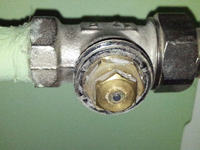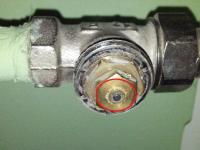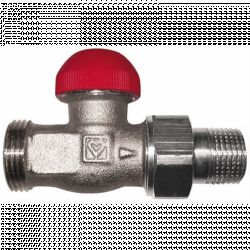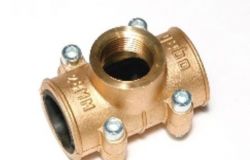Hello,
During the day today, the radiator suddenly stopped heating. Checking what was happening, I turned the thermostatic head and it turned out that it was loosely screwed to the valve, it was possible to do a few more turns of the nut. After removing the head, I saw that the valve needle was pressed almost completely. Perhaps it is possible to press it down by half a millimeter. As a spite, the frosts come and the room cools down quickly. And here is my question, can I somehow unblock the valve on my own? I will be able to report failures only on Monday and knowing the slowness of my administration, they know when it will be warm again. Maybe someone knows these valves and knows how to handle them?

greetings
During the day today, the radiator suddenly stopped heating. Checking what was happening, I turned the thermostatic head and it turned out that it was loosely screwed to the valve, it was possible to do a few more turns of the nut. After removing the head, I saw that the valve needle was pressed almost completely. Perhaps it is possible to press it down by half a millimeter. As a spite, the frosts come and the room cools down quickly. And here is my question, can I somehow unblock the valve on my own? I will be able to report failures only on Monday and knowing the slowness of my administration, they know when it will be warm again. Maybe someone knows these valves and knows how to handle them?

greetings





